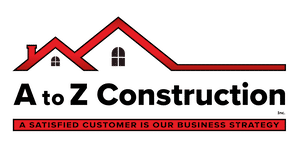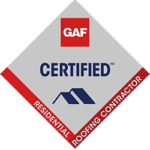
Facing the intricacies of roofing insurance claims can be a daunting experience for homeowners in Minnesota. Whether the cause is tumultuous storms, relentless hail, or unexpected events, the ability to navigate the insurance claim process is paramount. This extensive guide is designed to provide homeowners with the essential knowledge needed to adeptly maneuver through the complexities of filing a roofing insurance claim, ensuring they receive the coverage they rightfully deserve.

Assessing Roof Damage for a Roofing Insurance Claim
Before delving into the process of a roofing insurance claim, homeowners must first assess the extent of their roof’s damage. This pivotal step starts with a comprehensive visual inspection, a task that can be undertaken personally or entrusted to the expertise of a professional roofing inspector. It’s essential to identify signs of storm damage, such as raised shingles, visible cracks, or the absence of granules.
The significance of meticulously documenting the damage through photographs and videos cannot be overstated, as this visual evidence will serve as the cornerstone when submitting a claim. Equally important is gaining a comprehensive understanding of the insurance policy, as a clear comprehension of its coverage areas and inherent limitations is instrumental in the claims process.
Selecting a Reputable Minnesota Roofing Contractor
Having gauged the extent of the damage, the subsequent step is to engage a reputable roofing contractor. Opting for licensed professionals with ample experience is paramount. These professionals will undertake a comprehensive roof inspection and subsequently offer estimates for the necessary repairs or replacements. Beyond the technicalities, a trustworthy roofing contractor will be a guiding light throughout the roofing insurance claim process, ensuring homeowners make informed decisions that culminate in the best possible outcome for their insurance claim.
Filing the Roofing Insurance Claim
With a comprehensive roof assessment and the expertise of a chosen roofing contractor in hand, homeowners can confidently initiate the insurance claim process. Contacting the insurance provider to report the incident triggers the involvement of a claim adjuster, whose role is to meticulously evaluate the damage and subsequently determine the coverage. It is judicious to ensure that the chosen roofing contractor is present during the adjuster’s visit, as their presence ensures a balanced and equitable assessment. Subsequently, the claim adjuster compiles a comprehensive report based on their findings, serving as the bedrock upon which the coverage amount is ultimately determined.
Repair or Replace? Making an Informed Decision
With the insurance claim approval secured, homeowners are now poised to proceed with either a repair or replacement of their roof. For minor damage, such as a few missing shingles, a repair might suffice. However, significant damage or the aftermath of a formidable weather event could necessitate a full roof replacement. During this crucial phase, consulting extensively with the roofing contractor is imperative to determine the optimal course of action. Factors such as the severity of the damage and the age of the roof will weigh heavily in the decision-making process. Entrusting this process to an experienced roofing contractor is essential, as their expertise ensures the work is executed with precision, safeguarding the homeowners’ investment and the structural integrity of the home.
Insurance Limitations: Navigating the Boundaries
While insurance policies generally encompass damage by storms, hail, fire, and leaks, it is imperative to recognize that certain limitations exist. Damage resulting from the natural wear and tear of an aging roof, or from inadequate maintenance might not fall within the purview of coverage. Additionally, certain exclusions stipulated in the policy could lead to non-coverage of specific claims. Thoroughly reviewing the policy and comprehending its intricacies is essential to avoid unwelcome surprises during the claims process.
Tips for an Effective Roof Inspection: Enhancing Your Claim’s Success
Conducting a meticulous and comprehensive roof inspection forms the linchpin of a successful insurance claim. The following tips can significantly bolster the likelihood of a favorable outcome:
- Evidentiary Documentation: Compiling a comprehensive collection of photographs and videos showcasing the damage is crucial.
- Engage a Trustworthy Contractor: The insights offered by a detailed inspection and precise estimate from a reliable roofing contractor carry considerable weight.
- Seek Independent Inspection: Relying solely on the insurance company’s assessment is not recommended. Seeking an independent inspection helps validate the extent of the damage.
- Prioritize Experience: Enlisting the services of a seasoned roofing company to navigate your claim ensures adept handling of the process.
- Avoid Precipitous Agreements: Refrain from signing any pre-inspection contracts to mitigate the risk of potential fraud.
Depreciation in Roofing Insurance Claims
A nuanced understanding of depreciation is integral to roofing insurance claims. Insurance companies might withhold a portion of the claim amount based on an item’s projected lifespan. For instance, if an item is deemed to have 10% of its lifespan remaining, the insurance company might deduct 90% of its value from the claim. An understanding of depreciation aids in effectively managing expectations during the course of the claims process.
Understanding ACV vs. RCV in Roofing Insurance Claims
When it comes to insurance claims, it’s important to grasp the difference between Actual Cash Value (ACV) and Replacement Cost Value (RCV). These terms impact the amount you’ll get from your insurance company.
ACV (Actual Cash Value)
This considers the age of your roof and factors in depreciation. In simple terms, it takes into account how old your roof is and how much it has worn over time. So, the payout might be less than what it would cost to replace the roof completely.
RCV (Replacement Cost Value)
On the other hand, RCV covers the entire cost of replacing your roof without factoring in depreciation. This means you’d receive the full amount needed to get a new roof, minus any deductibles.
To figure out which method applies to your policy and claim, it’s a good idea to talk to your insurance provider. They can help you understand whether your insurance will consider the current condition of your roof (ACV) or if they’ll cover the full cost of replacement (RCV). This can make a big difference in the amount you receive from your claim.
Experience the Difference with A to Z Construction

At A to Z Construction, we understand the challenges homeowners face when dealing with roofing insurance claims. Our team of seasoned professionals is here to guide you every step of the way, from initial inspection to claim filing and beyond. With our expertise and commitment to excellence, you can trust us to handle your roofing needs with care and precision. Contact A to Z Construction today to learn how we can make the roofing insurance claim process a seamless and successful endeavor for you.









